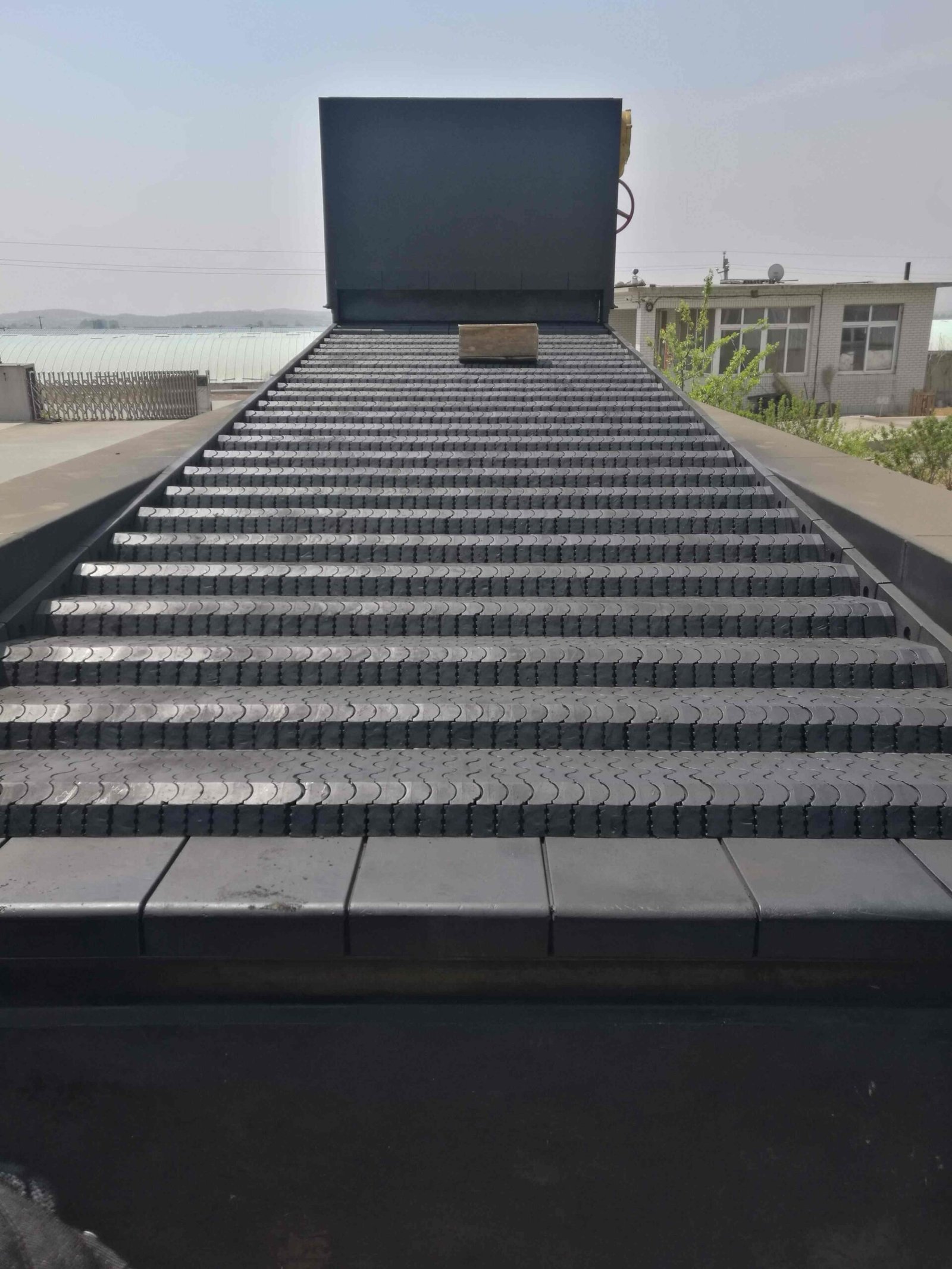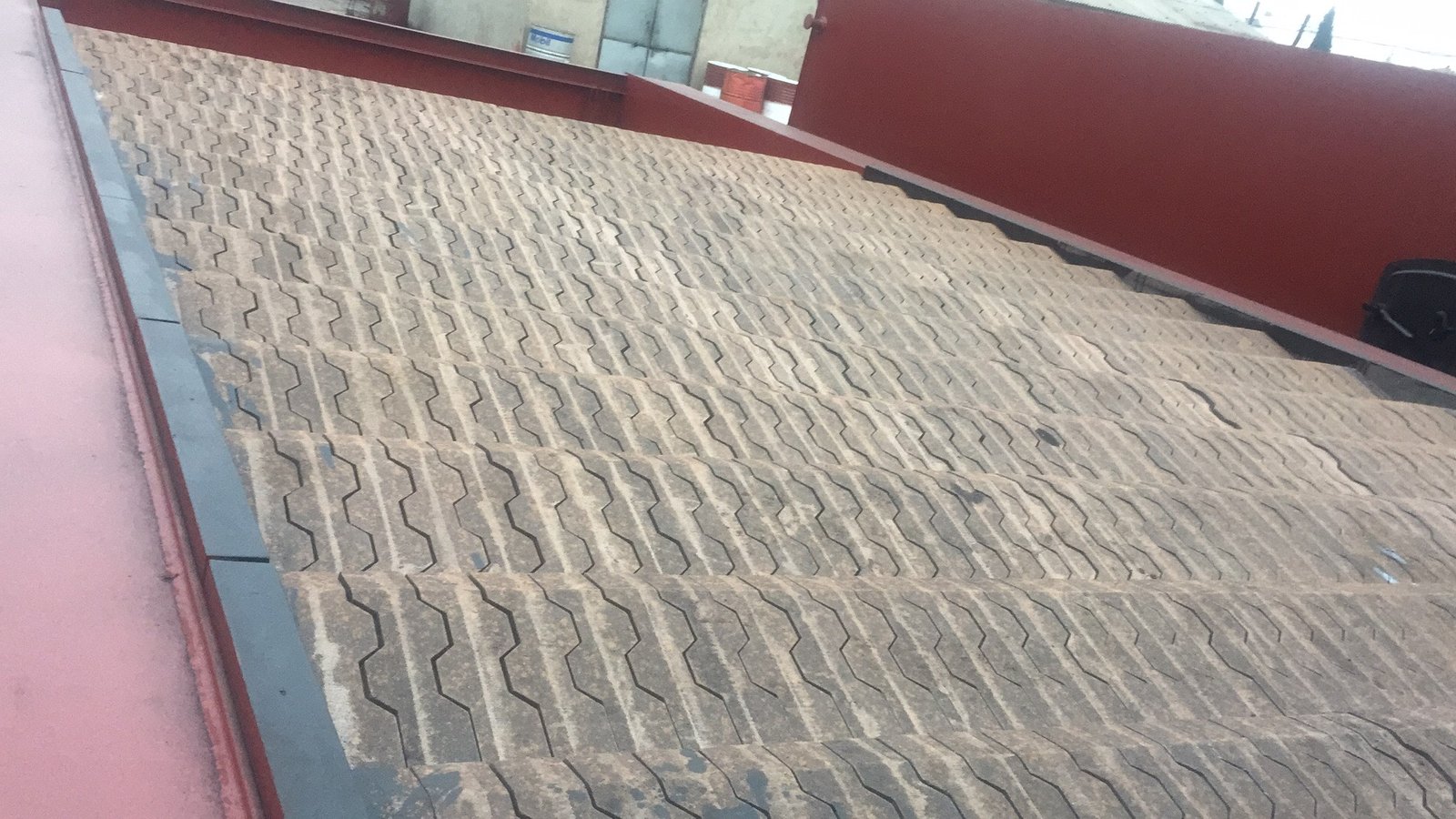Reciprocating Grate Boiler: Structure and Combustion
Structure of a Reciprocating Grate Boiler
The reciprocating grate boiler is widely used for burning low-grade coal and biomass fuels. Its main components include fixed grate plates, movable grate plates, transmission mechanism, and reciprocating mechanism.
The movable grate plates are supported at the rear by a movable beam and overlap the next fixed plate at the front, forming a stepped grate with a certain slope that allows fuel to move downward smoothly. These plates are connected by two channel steels into an integral movable frame. Driven by a motor through an eccentric wheel and push rod, the frame performs reciprocating motion with a stroke of 30–100 mm and a frequency of 1–5 times per minute.
The fixed grate plates are similarly overlapped and supported. To reduce pressure and wear, support rods are arranged in the middle of the movable plates.
Combustion air enters through longitudinal and transverse gaps between the grate plates, with the ventilation area ratio controlled at 7%–12%. After complete combustion, the ash falls into the ash pit at the rear of the inclined grate.

Combustion Process and Working Principle
The combustion process of a reciprocating grate is similar to that of a chain grate. Fuel descends from the hopper, passes through the regulating gate, and forms a fuel bed of appropriate thickness. Under the pushing action of the moving grate, it gradually travels backward across the inclined surface, undergoing four main stages:
Preheating and drying: Fresh fuel is heated by radiation from hot flue gas and furnace arches.
Volatile release and ignition: The fuel starts to decompose and ignite.
Char combustion: Coke continues to burn on the hot firebed.
Ash burnout: Residual carbon particles are fully consumed.
The unique advantage of the reciprocating grate lies in its poking and raking action. New fuel is pushed onto the hot firebed, improving ignition, while part of the burning coke is raked back into the unburned layer, serving as a heat source. This process loosens the fuel bed, improves permeability, and enhances overall combustion.
Fuel feed can be adjusted by the gate height, while stroke and frequency of the grate can also be regulated. Because combustion develops progressively along the grate length, zoned air supply is necessary—usually with higher air volume and pressure in the middle zone, and lower at the front (drying zone) and rear.

Furnace Design and Efficiency Enhancement
To strengthen turbulence and mixing, the furnace chamber is usually equipped with front and rear arches or partition walls, along with properly arranged secondary air supply. This ensures better ignition of fresh fuel and promotes complete combustion by allowing combustible gases to mix with excess air in high-temperature zones.
In terms of design, reciprocating grate boilers often reference chain grate boilers, including zoned air distribution, secondary air layout, and arch dimension optimization.
Advantages and Limitations of Reciprocating Grate Boilers
Advantages:
Dual-sided ignition ensures faster and more efficient combustion.
High adaptability to difficult fuels such as high-ash coal and strongly caking fuels.
Raking action enhances air–fuel contact, reducing incomplete combustion losses.
Limitations:
The front ends of movable grate plates are exposed to intense heat from burning coke, making them prone to damage.
Once damaged or detached, grate plates are difficult to detect and replace, posing operational risks.
Air leakage and fuel leakage at the inclined grate sides may lead to uneven fuel beds and unstable combustion.
Therefore, improving the sealing structure and ensuring durability of grate plates are key to stable and safe operation.
The reciprocating grate boiler offers high combustion efficiency and broad fuel adaptability, making it an ideal choice for burning low-grade coal and biomass. Although certain structural challenges exist, these can be mitigated through optimized air distribution and reinforced grate design.
For industries dealing with low-quality fuels, reciprocating grate boilers remain a cost-effective and reliable solution that combines durability with operational flexibility.
✅ Key SEO Enhancements:
Keywords included naturally: reciprocating grate boiler, structure, working principle, combustion process, advantages.
Clear section headings (H2/H3) for better Google indexing.
Technical accuracy preserved while improving readability.
Conclusion highlights value and application benefits, aligning with B2B search intent.
🔍 Conclusion
Reciprocating grate boilers combine robust structure, staged combustion, and fuel adaptability, making them highly effective for biomass and coal-fired applications. Their design enables better fuel utilization, higher efficiency, and reduced emissions compared to traditional fixed-grate systems.
📞 Contact Us
💡 Considering a reciprocating grate boiler for your plant? We provide custom boiler design, fuel testing, turnkey supply, and lifecycle support for solid-fuel combustion systems.
🔹 Contact us today for expert solutions in reciprocating grate boiler technology. 🔥♻️🏭✅
FAQ
What is the structure of a reciprocating grate boiler?
A reciprocating grate boiler consists of:
Boiler body (drum, furnace, superheater, economizer, air preheater)
Grate system – Made of multiple inclined or stepped movable grates that push fuel forward.
Air distribution system – Primary and secondary air supply for staged combustion.
Fuel feeding system – Stoker or conveyor to deliver biomass/coal.
Ash discharge system – Automatic ash removal from the grate bottom.
This design is robust, suitable for solid fuels like biomass and coal.
What is the working principle of a reciprocating grate boiler?
The working principle is based on stepwise mechanical movement of grates:
Fuel feeding – Solid fuel enters the furnace via feeders.
Ignition & drying – Fuel is ignited at the front, with moisture evaporating.
Combustion & gasification – As the grate moves, fuel undergoes volatile release and main combustion.
Burnout & ash discharge – Remaining char is burned, ash falls into the discharge system.
Heat transfer – Hot gases transfer heat to water/steam surfaces.
The staged movement ensures uniform combustion, better fuel utilization, and reduced clinker formation.
What are the combustion characteristics of reciprocating grate boilers?
Key combustion features include:
Staged combustion – Fuel moves through drying, volatile burning, and char burnout zones.
Good adaptability – Handles low-grade coal, biomass, and mixed fuels.
High combustion efficiency – Uniform air distribution improves fuel burnout.
Lower slagging tendency – Continuous movement avoids fuel accumulation.
Moderate efficiency – Typically 75–85% thermal efficiency, depending on fuel quality and operation.
What types of fuels can reciprocating grate boilers use?
They are fuel-flexible and can handle:
Biomass – Wood chips, sawdust, bagasse, rice husk, palm shells.
Coal – Lignite, bituminous, anthracite (low to medium quality).
Waste fuels – Municipal solid waste (MSW) and agricultural residues.
This makes them suitable for renewable energy and industrial process heating.
What are the advantages and limitations of reciprocating grate boilers?
Advantages:
Fuel flexibility and ability to burn biomass.
Mechanized ash removal and continuous operation.
Better combustion control than fixed grates.
Lower risk of clinker buildup.
Limitations:
Lower efficiency compared to fluidized bed boilers.
Higher mechanical wear due to moving grates.
Limited capacity – usually up to 65–100 tons/hr of steam.
References
Spirax Sarco – Solid Fuel Boiler Principles – https://www.spiraxsarco.com
Forbes Marshall – Grate Boiler Technologies – https://www.forbesmarshall.com
ScienceDirect – Combustion Characteristics of Reciprocating Grate Boilers – https://www.sciencedirect.com
ResearchGate – Biomass Combustion in Reciprocating Grates – https://www.researchgate.net
Babcock & Wilcox – Industrial Boiler Systems – https://www.babcock.com
IEA Bioenergy – Biomass Combustion Technologies – https://www.ieabioenergy.com
Engineering Toolbox – Boiler Types and Efficiencies – https://www.engineeringtoolbox.com
MDPI – Grate Boiler Combustion Analysis – https://www.mdpi.com
Thermax – Biomass Boiler Applications – https://www.thermaxglobal.com
Energy.gov – Boiler Efficiency and Fuels – https://www.energy.gov

